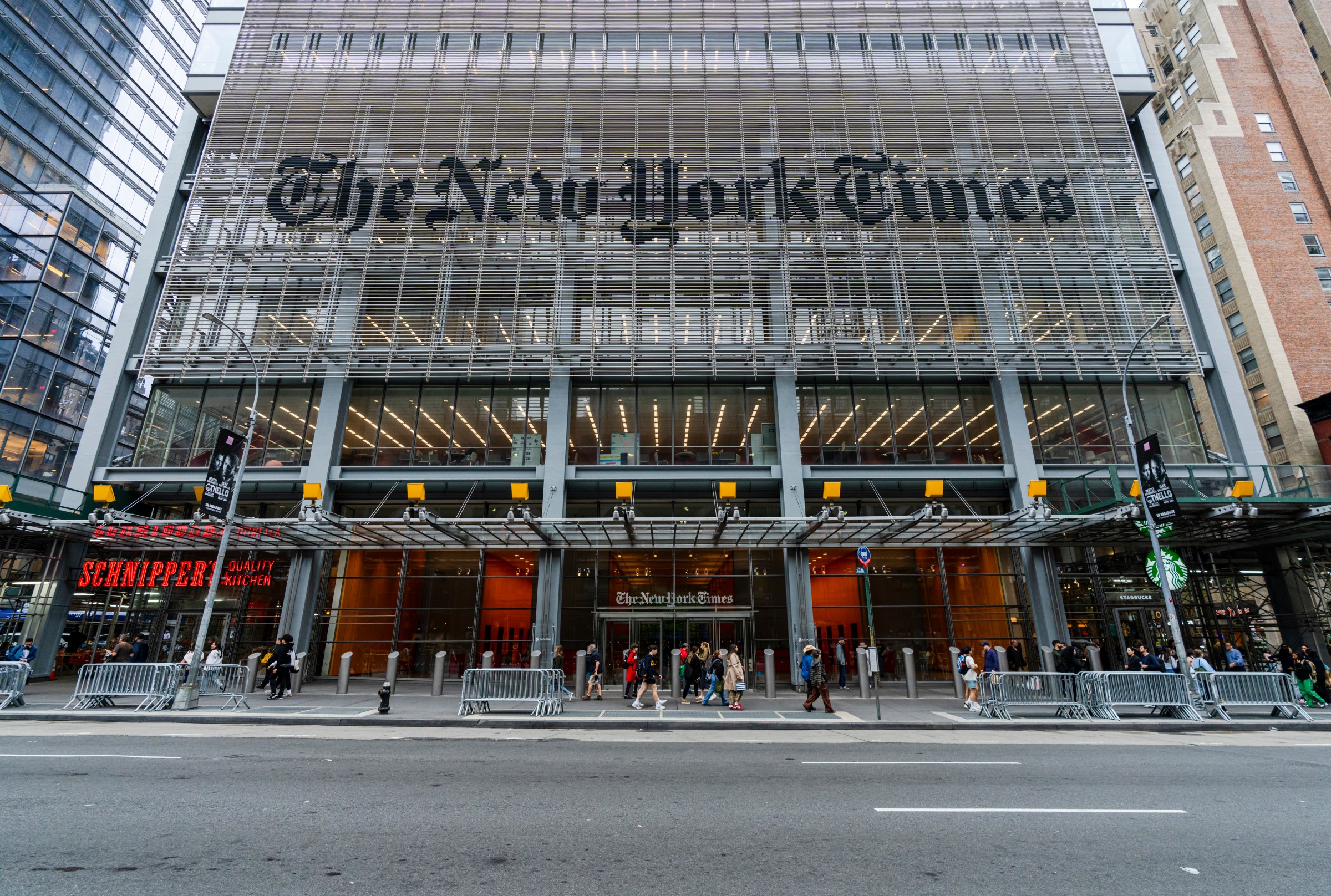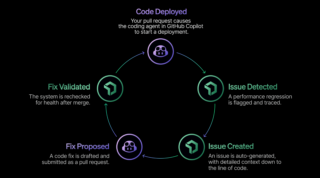The New York Times Strikes Landmark Generative AI Deal with Amazon
In a significant move shaping the intersection of journalism and artificial intelligence, The New York Times Company has announced a multi-year licensing agreement with Amazon. This partnership marks The Times’ first major generative AI deal, allowing Amazon to incorporate the esteemed publication’s content into various customer experiences, primarily leveraging it for AI capabilities.

The agreement permits Amazon to utilize summaries and brief excerpts from The New York Times’ extensive journalistic output within its products, notably including its AI-powered voice assistant, Alexa. Beyond direct content delivery to consumers, a crucial aspect of the deal involves Amazon using articles from The Times to enhance the training of its advanced AI models. This provides Amazon’s AI with access to a vast repository of high-quality, reliable information, potentially improving the accuracy, nuance, and breadth of its responses.
The licensed content is not limited to The New York Times’ core news reporting. The deal also encompasses material from The Athletic, the company’s popular sports news outlet, and NYT Cooking, its widely used recipe platform. This inclusion highlights the value Amazon places on diverse content types, from hard-hitting news and in-depth sports analysis to practical lifestyle information, all sourced from a reputable publisher. The integration across these different verticals suggests a broad application within Amazon’s AI ecosystem, aiming to provide users with rich, varied, and authoritative information through their interactions with Amazon’s services.
The timing and nature of this agreement are particularly noteworthy given the current landscape of relationships between major news organizations and AI developers. For over a year, The New York Times has been engaged in a high-profile legal battle against Microsoft and OpenAI. The lawsuit, filed in December 2023, accuses these technology giants of copyright infringement, alleging that they illegally copied and utilized millions of Times articles to train their AI models without permission or compensation. The Times argues that this unauthorized use deprives the publication of significant revenue streams, including those from subscriptions, licensing, advertising, and affiliate partnerships.
This legal action underscores the significant tension that has emerged as generative AI technology has rapidly advanced, raising complex questions about intellectual property rights and the value of original content in the digital age. News publishers, whose business models have been profoundly challenged by the internet, view the use of their archives for AI training as a direct threat to their survival and ability to fund quality journalism. They argue that if AI models can provide users with information derived directly from their reporting without proper attribution or payment, it diminishes the incentive for users to visit their sites or subscribe, thereby eroding the very foundation of their enterprise.
Amidst this contentious environment, the deal with Amazon represents a distinct pathway forward for The New York Times. Rather than solely pursuing legal remedies against companies that may have already used its content without permission, The Times is actively seeking commercial agreements for the future authorized use of its work. This dual strategy – litigating alleged past infringements while simultaneously establishing licensing partnerships for prospective use – suggests a calculated approach to navigating the complex AI landscape. It signals that The Times is not inherently opposed to its content being used by AI, but rather insists that such use must be properly licensed and compensated.
The approach taken by The New York Times in engaging with AI companies is not unique, but it highlights a broader industry-wide effort by publishers to establish terms for the use of their valuable content. Different news organizations are exploring various strategies, ranging from legal challenges to collaborative agreements. Some publishers have chosen to pursue lawsuits similar to The Times’, while others have opted to forge licensing deals, viewing them as a necessary step to secure revenue and influence how their content is used by AI.
This spectrum of responses reflects the diverse business models, legal perspectives, and strategic priorities within the publishing industry. For some, the potential for significant financial damages or a legal precedent is the primary goal. For others, securing immediate revenue and embedding their content within future AI applications through licensing is seen as a more pragmatic path.
The Chief Executive Officer of The New York Times Company, Meredith Kopit Levien, articulated the publication’s rationale behind the Amazon deal in a note to staff. Her statement emphasized core principles guiding The Times’ strategy in the age of AI:
“The deal is consistent with our long-held principle that high-quality journalism is worth paying for. It aligns with our deliberate approach to ensuring that our work is valued appropriately, whether through commercial deals or through the enforcement of our intellectual property rights.”
This statement reinforces the idea that The New York Times views its content as a valuable asset, deserving of compensation regardless of how it is consumed or utilized. By pursuing both licensing agreements and legal action, the company aims to establish and defend the economic value of its journalism in the rapidly evolving digital ecosystem powered by artificial intelligence. The deal with Amazon is presented not as a concession, but as an affirmation of this principle – that access to and use of their content comes at a price.
Amazon’s motivation for entering into this agreement stems from its ambitions in the generative AI space and its desire to enhance its existing products like Alexa. Earlier this year, Amazon launched Alexa Plus in early access, an upgraded version of its voice assistant powered by more advanced AI capabilities. The company has indicated significant user engagement with this new offering. To make Alexa Plus and other AI products more sophisticated, reliable, and informative, access to high-quality, current, and authoritative data is paramount.
News content from a source like The New York Times, The Athletic, and NYT Cooking provides exactly that: verified information, expertly written and edited, covering a vast range of topics. Using this content, both for generating summaries and excerpts in response to user queries and for training the underlying AI models, can significantly improve the performance and utility of Amazon’s AI services. It can enable Alexa, for instance, to provide more accurate, nuanced, and contextually relevant answers to questions about current events, sports results, or recipes, directly drawing from The Times’ reputable reporting and databases.
While the specifics of how Amazon will integrate these summaries and excerpts into Alexa and other experiences were not fully detailed, the mention of short excerpts and summaries suggests that Amazon intends to provide users with quick, AI-generated overviews or snippets of information sourced from The Times’ content. This could manifest in various ways, such as Alexa summarizing a news story when asked about a specific topic, providing a brief overview of a game covered by The Athletic, or summarizing the steps of a recipe from NYT Cooking. The use for AI training is a more fundamental application, leveraging the structured and reliable nature of journalistic text to refine the AI’s understanding of language, facts, and context.
The financial terms of the multi-year licensing agreement were not publicly disclosed by either party. This lack of transparency is common in such deals, often considered proprietary business information. However, the fact that The New York Times, a company actively involved in copyright litigation over unauthorized AI training, chose to enter into a compensated licensing agreement with Amazon speaks volumes about the perceived value of its content. The undisclosed sum is presumably substantial enough to incentivize The Times to license its work for the specific uses outlined, indicating a potentially significant revenue stream derived directly from the application of its content in AI technologies. The multi-year nature of the deal also suggests a long-term commitment from both parties, anticipating the continued evolution and importance of AI in consumer technology.
This agreement is a clear signal that major publishers are beginning to successfully monetize their archives and ongoing output in the context of generative AI development. It sets a precedent for future negotiations between content creators and AI companies, reinforcing the idea that data derived from original, high-quality sources is a valuable commodity in the AI training process. As AI models become increasingly integrated into daily life through voice assistants, search engines, and other applications, the demand for licensed, verified content is likely to grow.
For The New York Times, this deal represents a strategic pivot from solely defensive measures (lawsuits) to offensive ones (licensing). By partnering with a major technology platform like Amazon, The Times secures a new revenue stream and ensures that its content is utilized in a controlled and compensated manner within future AI-powered products. It positions The Times not just as a victim of potential copyright infringement, but as a proactive participant in the AI ecosystem, seeking to shape how its valuable intellectual property is used and valued.
Looking ahead, the outcome of The New York Times’ lawsuit against Microsoft and OpenAI, combined with the terms and impact of licensing deals like the one with Amazon, will significantly influence the relationship between content creators and AI developers. It will help define the legal and economic frameworks for the use of copyrighted material in training and deploying generative AI. This deal with Amazon is a concrete step in that evolving dynamic, demonstrating that licensing is a viable path for publishers seeking to be compensated for the use of their work by AI companies.
It also raises questions about the user experience. How will summaries and excerpts from The Times be presented within Alexa? Will users be directed back to The Times’ website for the full article? Will the source be prominently attributed? These details, while not specified in the announcement, will be crucial in determining how effectively this partnership benefits both The New York Times (by potentially driving traffic or subscriptions) and Amazon (by providing valuable information to users). The balance between providing concise AI-generated answers and encouraging engagement with the original source remains a key challenge in the integration of AI with published content.
In conclusion, The New York Times’ multi-year licensing agreement with Amazon for the use of its content in AI products, including Alexa and AI model training, is a landmark event. It represents a significant strategic move by The Times to monetize its intellectual property in the age of generative AI, complementing its ongoing legal efforts to protect its copyrighted material. For Amazon, the deal provides access to high-quality, authoritative content essential for enhancing its AI capabilities and products. While the financial terms are confidential, the agreement underscores the increasing value placed on premium content in the development of advanced AI systems and signals a potentially transformative period in the relationship between journalism and artificial intelligence. This partnership is poised to shape how users access and interact with trusted information through AI platforms in the years to come.








Comments